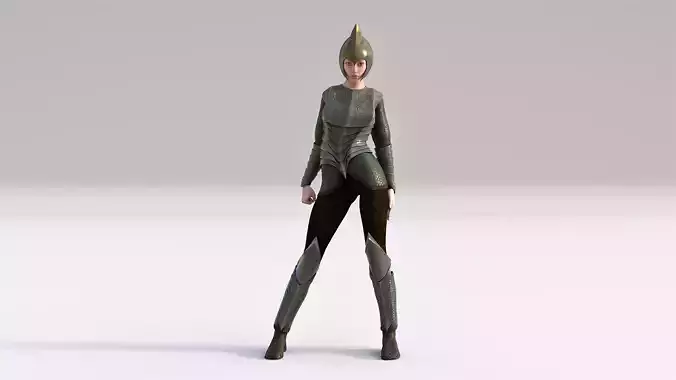1/18
Elven Women Armor Outfit Rigged
Low-Poly
4K Texture
PBR/Game Ready
An elf (pl.: elves) is a type of humanoid supernatural being in Germanic folklore. Elves appear especially in North Germanic mythology, being mentioned in the Icelandic Poetic Edda and the Prose Edda.
In medieval Germanic-speaking cultures, elves were thought of as beings with magical powers and supernatural beauty, ambivalent towards everyday people and capable of either helping or hindering them.[1] Beliefs varied considerably over time and space and flourished in both pre-Christian and Christian cultures. The word elf is found throughout the Germanic languages. It seems originally to have meant 'white being'. However, reconstructing the early concept depends largely on texts written by Christians, in Old and Middle English, medieval German, and Old Norse. These associate elves variously with the gods of Norse mythology, with causing illness, with magic, and with beauty and seduction.
Galadriel (IPA: [ɡaˈladri.ɛl]) is a character created by J. R. R. Tolkien in his Middle-earth writings. She appears in The Lord of the Rings, The Silmarillion, and Unfinished Tales.
She was a royal Elf of both the Noldor and the Teleri, being a grandchild of both King Finwë and King Olwë. She was also close kin of King Ingwë of the Vanyar through her grandmother Indis. Galadriel was a leader during the rebellion of the Noldor, and present in their flight from Valinor during the First Age. Towards the end of her stay in Middle-earth, she was joint ruler of Lothlórien with her husband, Celeborn, when she was known as the Lady of Lórien, the Lady of the Galadhrim, the Lady of Light, or the Lady of the Golden Wood. Her daughter Celebrían was the wife of Elrond and mother of Arwen, Elladan, and Elrohir. Tolkien describes Galadriel as the mightiest and fairest of all the Elves that remained in Middle-earth (after the death of Gil-galad)[T 1] and the "greatest of elven women
REVIEWS & COMMENTS
accuracy, and usability.


















